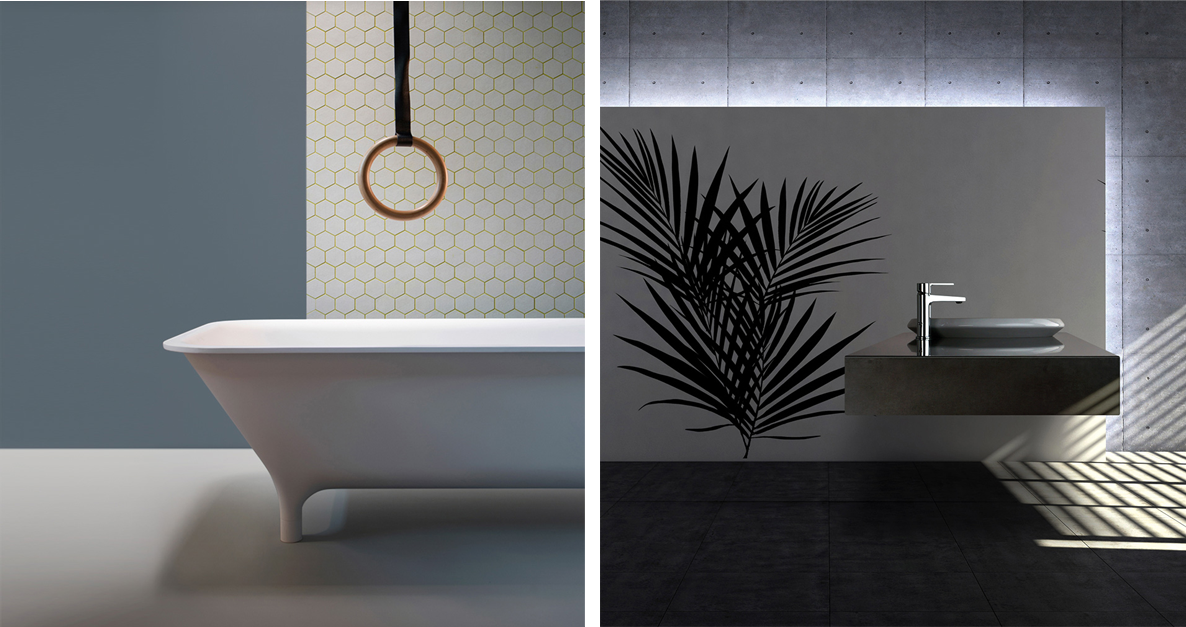Plasson a B2B & B2C eCommerce Platform
Plasson (PLSN) is a global manufacturer of polyethylene products, famous for their high-quality piping structures and livestock equipment used across all five continents. Founded in 1964, Plasson has developed and marketed numerous patented technologies. In recent years, they have allocated their resources and formed partnerships with industry leaders to develop a state-of-the-art Plasson bathroom hardware and accessories line.
The Plasson bathroom line includes fixtures, such as toilets and sinks, accessories and spare parts. These products are displayed in the company showroom in Kibbutz Maagan, Israel, and are exclusively distributed through B2B channels in Israel. In order to expand and include the end user to their customer base, Plasson turned to Betanet to develop a brand new eCommerce website, PlassonDesign.co.il. where their full bathroom line is being showcased in an online shop.
The first challenge was to create an interface which provides the buyer with all the resources needed to make an informed decision
While the end user is accustomed to purchasing products online, specific industry sub-segments such as home furnishings and fixtures remain products that consumers prefer seeing prior to making a purchasing decision.
The website offers a wide array of features to instill confidence in the buyer, including DIY video tutorials, downloadable instructions, online customer support, and in-home installation and repair packages, the latter can be added to the shopping cart along with the purchased products.
While the website boasts an abundance of informative content needed to make a purchasing decision, the shopper might still opt for a real-life, in store experience to examine the products. The Plasson virtual showroom, designed by Homeplan.co.il, fills this requirement by allowing users to browse the floor with an HQ in-person feeling. The shopper can now navigate the aisles, see dozens of faucets, sinks, toilets, and more on display, allowing an easy visual comparison of sizes, colors and shapes. When selected, products can be viewed from different angles, additional information appears, and the item can be added to the shopping cart. When developing the website we thought of a smart ordering system. The logic was to navigate purchasing orders through different channels depending on what product or service were ordered. For example, purchasing orders with an installation service would be differentiated from regular orders or repair parts orders.
Using Magento, creating an eCommerce website where consumers
can virtually See Touch, and Feel your products
The intention was developing a website where one doesn’t need to be an industry professional to purchase bathroom fixtures or accessories online. Furnishing a bathroom can be confusing! Shoppers often don’t know what they are looking for, or even where to begin. The Plasson project manager, Anat Skopski, stated the website is intended to assist shoppers in finding the right product for their needs, based on exact measurements, shape and finish. According to Anat, as of now the best selling items are spare bath parts. In order to meet Anats’ high expectations we decided to implement W3C Accessibility Standards directly into the coding when developing the website. At betanet we understand that accessibility is critical for companies that want to develop super high quality websites and web tools,
The second challenge was developing a website for two sets of target audience strategies on a single platform
In today’s rapidly changing environment, eCommerce players must focus their main efforts on driving sales through their platforms and churning out higher revenue. Generally speaking, there are two types of target audiences for eCommerce websites. There is the B2C process, where the “end consumer” buys products directly from an online store, and there is the B2B side, where consumers are usually the distributors, industry professionals or resellers.
So, how do you create a seamless customer experience for both? Further, how do you adjust a dynamic pricing model for end consumers and distributors?
We had to consider all these elements. and overcome this challenge by dividing the inventory into a product categories, as listed:
- Bathroom fixtures - such as sinks
- Repair product parts - such as faucet parts
- Bathroom accessories - such as taps
- Unseen Products - Items that are displayed on the website but are not available for online purchasing.
When interviewing Anat, we asked how they plan on generating traffic to the website “The plan is to reach the end users and distributors with the same website, thats why some items are not available for online orders. Anat also mentioned that, surprisingly, the website’s best sellers are the “spare product parts”, and perhaps more marketing efforts will be allocated to that section of the website.”

When reaching the b2c market, we're looking at a large scale market which is emotionally driven. The idea here was to create brand awareness and credibility. As opposed to the b2b market which is more of a niche, and more rationally driven, and the idea here was to generate quality leads.
Home page - First things first, the homepage is the first impression, the focus is on the above the fold section of the website and making sure it's engaging and encourages action by users. The challenge was to create a homepage that will convert end users into buyers while still being relevantly informative for the b2b clients.
Customer assistance - Combining eCommerce with knowledge base information on one platform. As some products need installation or repair service, the idea was to add how-to instructional videos and tutorials and virtual showroom with the goal of creating a knowledge management portal. The aim was using visual stimulators to increase customer duration on the website and therefore increasing engagement.
Automation and Integration - Automating all sales processes and integrating to Plasson’s external systems. Offering a seamless customer experience and refined automated payment systems. Incorporating elements such as informative product pages, a clear purchase screen flow and an easy checkout process for all audiences. The idea of creating automation processes which integrate to Plasson’s infrastructure systems was offering a customer journey with intuitive navigation which in turn helps convert successfully.
Catalog & Pricing - Creating different catalog and pricing models for various levels of the target audience. considering less variance and a more consistent pricing model for the b2c market. The only variance may be purchase offers, discount coupons, seasonal sales, and clearance sales. Where B2B eCommerce platforms offer special pricing based on quantity, volume, and frequency of orders placed.
Utilizing our expertise in eCommerce solutions, building a seamless foundation
for sophisticated eCommerce platforms
Regardless of who is the target audience of your eCommerce website, customer experience is the main preeminence when designing a website and should be given a priority. Want to enhance your platform’s customer experience? Let’s Talk









